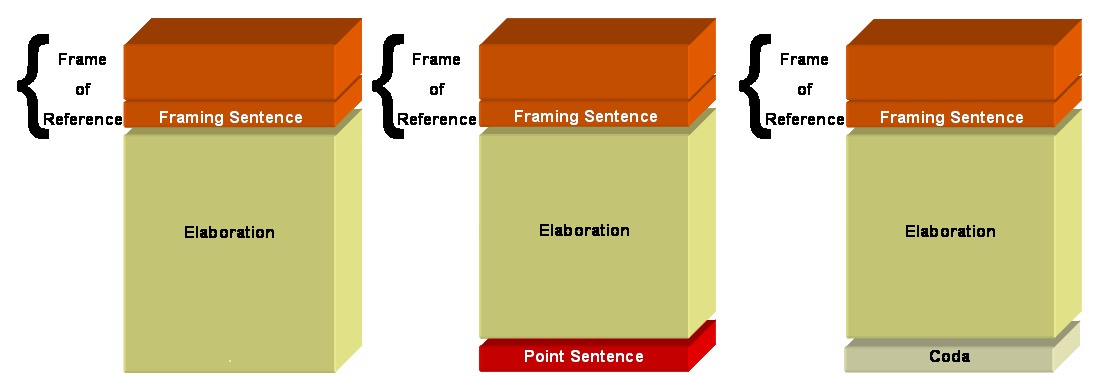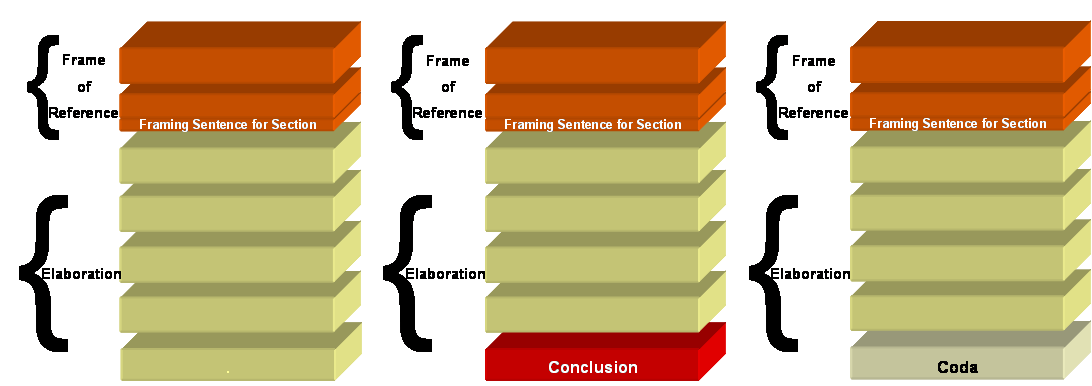The Science Of Scientific Writing Set D Expectations of the Generic Section Maps for Sections Exercise 1 Exercise 2 Final Page .
OVERVIEW: The way to well-written science
PART I: Paragraphs and Sentences
SET A: Paragraphs: The Maps Behind Them
SET B: Paragraphs: Using Maps to Meet Readers' Expectations
SET C: Paragraphs with Something Extra: Points and Tails
SET D: The Generic Section: Expectations and Maps as Blueprints
SET E: Scientific Sections: The Methods and Results
SET F: Scientific Sections: The Discussion
SET G : Scientific Sections: The Introduction
SET H : Sentences
SET I : The Paper as a Whole
PART II: The Paper and its Sections
SET 1: Argument Parts
SET 2: Indicator Words
SET 4: Locating Arguments in Prose
SET 5: Rationale's Essay Planner
SET 6: Evidence in Arguments: Basis Boxes
Synthesis 1: Position-Early Paragraphs
Synthesis 2: Position-Final Paragraphs
Synthesis 3: Writing a Discussion I
Synthesis 4: Writing a Discussion II
Set D: The "generic" section: stepping up from the paragraph models
In Sets B and C you became familiar with the types of paragraphs that readers expect in expository text. All paragraphs of four or more sentences should consist of a Frame of Reference section (concluding in a Framing Sentence), followed by an Elaboration, and optionally, a Point and/or Coda. Review your understanding of these patterns by looking over the summary diagrams below.
The basic patterns of a paragraph

The only other important point to remember for the moment is that a paragraph should be coherent, and the one suggestion made in this regard so far is:
Any paragraph in a scientific paper should have one dominant (core) purpose (description/report, argument, explanation) and any non-core content should not overwhelm the core content.
Sections, essays, generic expository texts
These patterns above also underpin higher levels of writing as well, and in Set D we will look at how to apply them to what I call the "generic" section. This will provide a foundation for undestanding the traditional sections of a scientific paper: Introduction, Materials and Methods, Results, Discussion. These will be considered in detail in later sets. While only the Discussion and Introduction follow the generic patterns explicitly, nevertheless, the two other section types often do so implicitly, and occasionally explicitly. For example, the Results section of this recent paper (doi:10.1016/j.cell.2009.02.018) begins with a Frame of Reference paragraph:
Studies from the 1970s (Chesney et al., 1974) showed that human platelets contain significant amounts of collagenase activity that could be released upon exposure to various agonists. More recent studies (Galt et al., 2002) identified the major platelet collagenase as MMP-1 and found that MMP-1 could prime the aggregatory response to other agonists and cause redistribution of the β3 integrins to the cell periphery; however, the mechanism of action of MMP-1 remained unknown. We set out to determine whether the pro-aggregatory effects of platelet MMP-1 were mediated by the PAR1 receptor.
The three diagrams below show the "generic section" versions of the paragraph patterns above. In scaling up to a section, our "building blocks" are now paragraphs rather than sentences. Each of the models below has seven paragraphs. One very important thing to note is that the most common location for a section's Framing Sentence is the end of the last paragraph of the Frame of Reference part. Thus, if that paragraph is a long one, the Framing Sentence for the section will be the concluding point sentence of its paragraph.
The basic patterns of a generic section (each single-coloured block is a paragraph)

Below is a three-paragraph long example of a section following the first pattern above. It is an entire Introduction to a paper. The main way in which the Introduction to a paper varies from the generic pattern is in having a long Frame of Reference relative to its Elaboration (which in this case a single paragraph). The use of distinct sections in a scientific paper, and the structural variation amongst them, reflect how the paper has evolved to meet the special demands of publishing original work.

As in the diagrams above, the Framing Sentence for the section is a Point Sentence. The other common location for a section's Framing Sentence is the Framing Sentence of the first paragraph.
A section must be coherent
Just as for a paragraphs, the other main expectation for a section is that it be coherent, and one aspect of coherence is the following:
Any section in a scientific paper should have one dominant (core) purpose (description/report, argument, explanation) and any non-core content should not overwhelm the core content.
In the asthma example above the core purpose is argument, focused on the (implied) claim:
We have the means to clarify whether indoor-time-associated asthma of children involves indoor or outdoor allergens, an important issue in understanding the aetiology of childhood asthma.
Reviews, essays, term reports and other texts also follow the pattern of a generic section
Mastering the generic section patterns will also help you with other writing tasks. It is the standard structure expected of a scientific review (including a thesis literature review) and of the essays and term reports that are typical of Humanities courses. It can also be applied to many other types of non-creative writing (e.g. Statements of Purpose, cover letters for various applications).
......